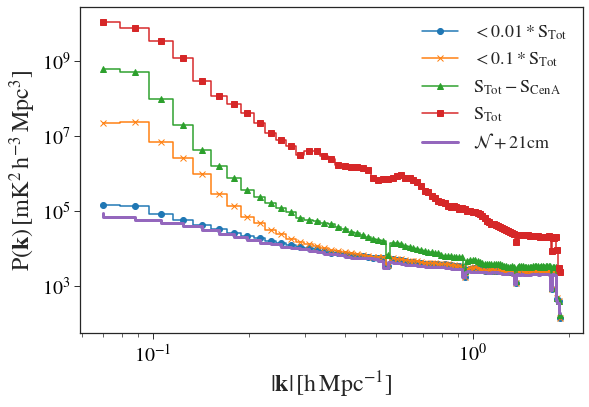Bringing in the New Year for 2022 is a Monthly Media from PhD student Jaiden Cook, on his mission to remove every supernova remnant from existen- from images of the early universe.
The Epoch of Reionisation (EoR) is an early period of cosmic history when the primarily neutral hydrogen Universe collapsed into the first stars and galaxies. This neutral hydrogen has a distinct but weak radio signal, known as the 21cm line, as one wavelength of the radio signal is about 21cm long. The first stars and galaxies pumped highly energetic radiation into the surrounding neutral hydrogen gas and tore the gas apart (ionising it), carving out large bubbles of ionised hydrogen around them.
The emission from the neutral 21cm gas is very faint, and is unlikely to be detected by the current generation of radio instruments. Direct imaging of neutral hydrogen and ionised bubbles around the first galaxies during the EoR is one of the primary science goals of the future Square Kilometre Array (SKA) telescope, but is unachievable by current radio telescopes.
The current generation of radio instruments are instead focused on detecting the statistical 21cm signal. The signal is present across the entire sky, and as such we can extract a statistical representation of it from the EoR, without needing the sensitivity of the future SKA. However, the 21cm signal is 10,000 to 100,000 times fainter than foreground galaxies and radio emission from our own Galactic plane (the Milky Way). In order to discover the EoR signal, we can only search in small windows on the sky, where there happen to be fewer bright foreground objects.
One type of bright foreground object which is particularly troublesome are supernova remnants. Supernova remnants are the leftover gas and electrons from the spectacular deaths of some of the most massive stars. These remnants are roughly spherical in shape, and are some of the brightest radio objects in the sky. As they appear at the edge of the EoR windows, they have mostly been ignored. However, they can have angular sizes similar to the ionised bubbles formed during the EoR, and this can mask the statistical 21cm neutral hydrogen signal.
As part of his PhD work, Jaiden has created morphological models of two bright supernovae remnants located within our own Milky Way galaxy, Pupis A and Vela. Figure 1 shows the observation of the remnants in the left column, and Jaiden’s models of them on the right.

Morphological models of the brightness of Galactic supernova remnants. Left: Examples of two of the brightest supernova remnants, Pupis A (a), and Vela (c). Right: Morphological models for the corresponding supernova remnants.
Jaiden set out to determine how many supernova remnants would need to be ‘removed’ from the data before the EoR signal could be detected.
To do this, he used models of Galactic supernova remnants to simulate radio observations taken from the Murchison Widefield Array (MWA) telescope, located in central WA. He then compared this to a simulated signal of the EoR, using a mathematical technique called a power spectrum. By subtracting different amounts of the total number of supernova remnants (figure 2), he could determine what portion needs to be subtracted in order to retrieve the 21cm signal from the EoR.

The top red line with squares shows the simulated signal when all supernovae remnants are included. The bottom purple line is the simulated EoR signal with zero supernova remnants – the signal Jaiden wants to get. Each line between from top to bottom shows more supernova remnants removed from the data. The lower blue line with circles best approximates the EoR signal, having had the most number of supernova remnants removed.
He found that almost all of the supernova remnants had to be subtracted in order to retrieve the EoR signal! These sources, and others like them, cannot continue to be ignored if scientists want to understand the conditions during the early Universe; the Epoch of Reionisation.